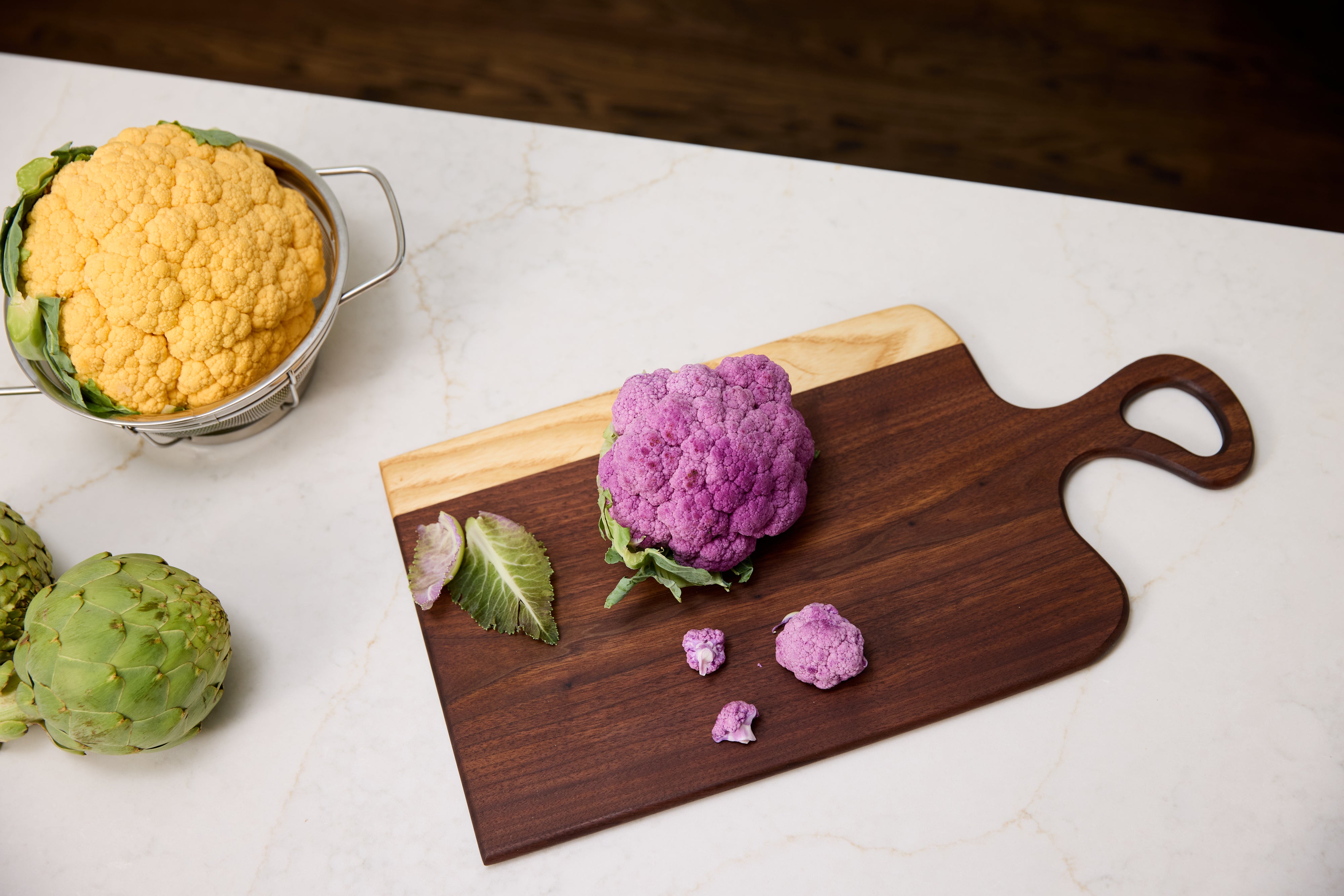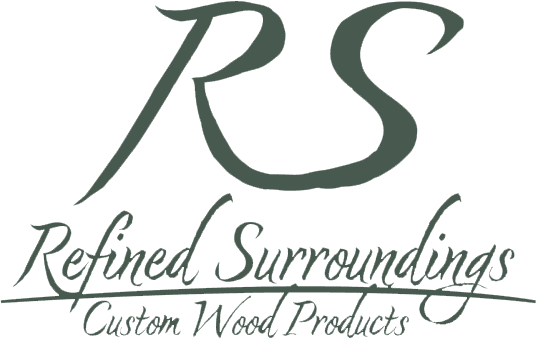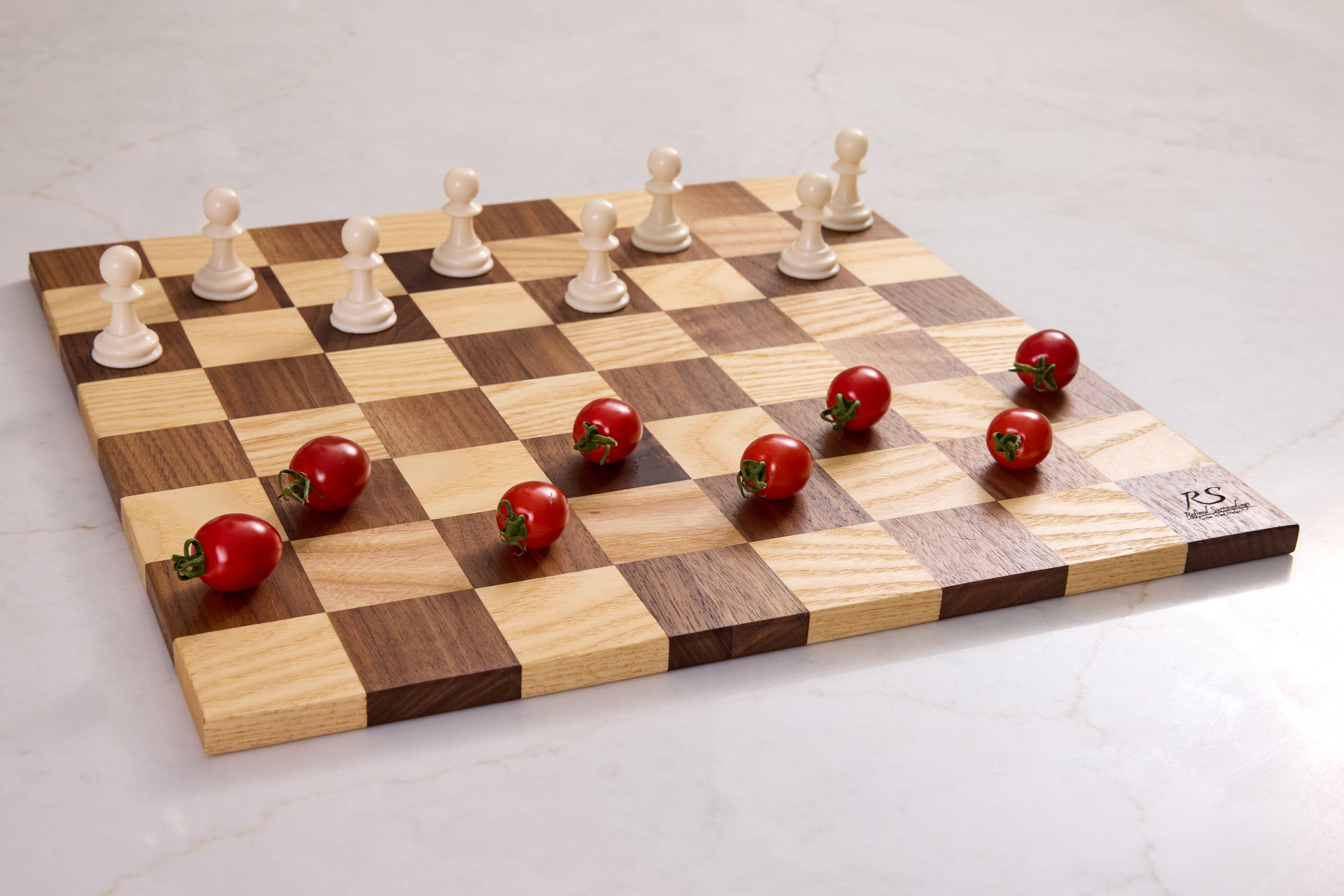
The Science of Beauty in the Kitchen: Why Luxury Cutting Boards Aren't Just Beautiful but Also Healthier by Design
Most people think of cutting boards as basic kitchen tools. You use them to chop vegetables, slice bread, and that's about it. But here's the thing: the cutting board you choose actually matters more than you might think. The material, how it's made, and even the design can impact your food safety, how long it lasts, and how your kitchen looks.
At Refined Surroundings, we believe that beautiful things should also be good for you. That's why our walnut, maple, and cherry cutting boards aren't just pretty to look at. They're actually healthier options backed by science. In this article, we'll talk about how beauty and health come together in your kitchen, and why that inexpensive plastic board might not be as safe as you thought.
Key Takeaways
- Your cutting board material really matters: Natural woods like walnut and maple actually fight bacteria naturally, making them some of the healthiest cutting boards you can buy. Studies show they work better than plastic.
- Plastic boards release tiny particles into your food: Every time you cut on plastic, microscopic pieces break off and get into what you're eating. Wooden boards don't do this.
- Quality boards last way longer: A good wooden cutting board can last for decades if you take care of it. That makes it cheaper in the long run than buying plastic ones over and over.
- Smart design means cleaner surfaces: Things like how the wood grain runs and what oil is used actually help keep bacteria away while being gentle on your knives.
- Beautiful boards get better care: When you love how something looks, you're more likely to clean it properly and keep it in great shape.
What Makes a Cutting Board "Luxury" Today?
Luxury isn't what it used to be. These days, it's not about flashy decorations or showing off. Real luxury is about quality craftsmanship, materials that last, and things that actually work well in your daily life. Modern cutting boards are a perfect example of this shift.
Every cutting board we make at Refined Surroundings is handmade with careful attention to detail. We pick quality wood, shape it precisely, and use natural finishes that are safe for you and bring out the wood's natural beauty. These aren't cookie-cutter products from a factory. They're functional art made by people who care about what goes into your home.
This answers a question we hear a lot: "Why should I spend more on a cutting board?" Three reasons: they last longer, you can refinish them if needed, and they're more hygienic.
Your Health Starts with the Right Material
When you're looking for the safest cutting board material, what's on the surface really matters. How porous it is, whether it naturally fights bacteria, and which way the wood grain runs all play a part in keeping your food safe. Research proves that walnut and maple cutting boards actually kill bacteria better than plastic ones.
A famous study from the University of Wisconsin found something interesting. After being exposed to bacteria, wooden cutting boards had fewer germs you could find compared to plastic boards, even after being used multiple times. Why? The wood's natural structure pulls bacteria inside, where they die instead of growing on the surface.
We take this natural advantage even further at Refined Surroundings. We use lumber that's been properly air-dried and aged. Every board gets finished with food-safe oils, never synthetic coatings like polyurethane. Each piece meets the highest standards to be the best non toxic cutting board you can find. We stick with natural materials and traditional methods because they work with nature, not against it.
Just because something is smooth doesn't mean it's clean. Plastic boards might start out smooth, but every knife cut creates tiny grooves where bacteria hide. These grooves are really hard to clean properly. Real wood actually heals itself as it swells and contracts with moisture, keeping the surface cleaner over time. As we talked about in our guide to the healthiest cutting boards, this self-healing feature makes wood one of the cleanest materials you can use.
The Problem with Plastic Boards You Need to Know About

Recent research has uncovered something worrying about plastic cutting boards. They shed tiny plastic particles every time you use a knife on them. A 2023 study in Environmental Science & Technology found that one polypropylene cutting board could release up to 50,000 tiny plastic bits with each cut. Those bits go straight into your food.
These microscopic pieces from polyethylene or polypropylene boards aren't just something scientists worry about in labs. Research from places like the University of New Castle shows that the average person now eats about five grams of plastic every week — roughly the same weight as a credit card. Your kitchen cutting board is a big part of where that plastic comes from.
The food safety issues go even deeper. These tiny plastics can carry harmful bacteria and chemicals, creating two problems at once. Unlike polypropylene or plastic cutting boards that can shed microplastics, natural wood stays solid and intact for its entire life.
This is why we make real-wood cutting boards at Refined Surroundings as an investment in your health, not just your kitchen decor. When you pick hardwood instead of plastic, you cut out a major source of daily plastic exposure. Plus, you get all the natural bacteria-fighting benefits that make wooden boards the healthiest cutting boards for your family.
Understanding Walnut, Maple, and Cherry Woods
Each type of wood has its own special qualities that make it great for cutting boards. Here's what makes each one unique:
Walnut is naturally good at fighting germs, and it's gentle on your knife edges too. Those rich chocolate colors get even deeper over time. Walnut is dense enough that moisture can't easily get in. Our walnut cutting boards give you rich, beautiful tones plus natural germ-fighting power. You get beauty and great food safety in one.
Maple has been the favorite of professional chefs forever and for good reason. It has a light color and tight grain that creates one of the smoothest surfaces you can cut on. It also holds up incredibly well even with heavy daily use. Maple's light, closed-grain texture makes it one of the healthiest cutting board choices, especially if you like a brighter look that goes with modern kitchens.
Cherry sits right in the middle with its warm color and thick texture. It doesn't soak up moisture easily, which is great for hygiene. Cherry boards develop a warm patina over time, one of the hallmarks of real wood craftsmanship. The color deepens from a honey-pink shade to rich amber as the years go by.
In woodworking terms, these are all "closed-grain hardwoods." That means their structure naturally keeps out moisture and bacteria, making them completely different from softwoods or porous materials that could trap germs.
How Good Design Makes Boards Healthier

Beautiful design and good hygiene actually go hand in hand with cutting boards. The design choices aren't just about looks, they directly affect how clean and easy to use your board is. Beveled edges mean less area where moisture and food bits can collect. Rounded handles don't have sharp corners where bacteria might hide. Oil finishes soak into the wood to protect it while staying completely food-safe and natural.
At Refined Surroundings, we believe that real luxury comes from how well something works. Every curve has a reason. Every finish makes the board perform better. Every small detail adds to both how it looks and how hygienic it is.
There's also a mental aspect worth mentioning. When something looks beautiful, you take better care of it. If you own a gorgeous board that looks amazing on your counter, you're more likely to clean it the right way, oil it regularly, and treat it well. With the right care, a handcrafted board stays beautiful and clean for years or even decades. The beauty isn't just surface level, it encourages you to be a more mindful owner.
Choosing Between Maple, Cherry, and Walnut

Picking between these amazing hardwoods usually comes down to what your kitchen looks like and what you need:
Go with Maple if your kitchen has lighter colors, you like the classic look that professional cooks use, or you want the smoothest possible surface to cut on. Its light tone looks great with stainless steel appliances and white cabinets.
Go with Cherry if you want warmth and balanced color in your kitchen. Cherry is the middle ground between light maple and dark walnut. As it gets richer in color over time, your board grows and changes with your kitchen's story.
Go with Walnut for rich luxury and the best safety features. Its natural oils fight bacteria on their own, and the dramatic grain pattern becomes an instant focal point. Walnut makes a bold statement while working incredibly well.
All three are food-safe hardwoods when they're finished the right way. Even though walnut has natural tannins in it, it's completely safe when sealed with natural oil.
Using Your Cutting Board as Kitchen Decor
The line between prep tool and serving piece has gotten pretty blurry in modern kitchens. High-end cutting boards now do double duty, they work as charcuterie displays and counter decorations, showing that beautiful things should also be useful.
We design with both uses in mind at Refined Surroundings. The same wood qualities that make a great charcuterie board also make a healthier cutting surface. Tight grain, smooth finish, and natural germ-fighting properties help whether you're prepping food or serving guests. We make dedicated charcuterie and serving trays that move easily from kitchen prep to entertaining.
This flexibility is what modern luxury living is all about having fewer, better things that do multiple jobs beautifully. Your cutting board becomes a serving piece because luxury should be functional. These versatile pieces move beautifully from kitchen prep to seasonal decorating. You don't need separate tools, and everything in your home looks connected.
How We Build Health into Every Board
Understanding how we make these boards shows why they're more than just pretty objects. Every piece starts with picking the right wood. We use sustainable North American hardwoods chosen for their grain quality and natural properties. We work with responsible forestry companies that care about replanting and protecting the ecosystem.
After that, skilled craftspeople hand-sand each board. Custom shaping creates the comfortable curves and balanced proportions that make these boards a pleasure to hold and use. The oiling process only uses food-grade mineral oil or natural alternatives. We never use synthetic finishes that might be unsafe or let the wood dry out and crack.
A final inspection ensures both the cleanliness and finish quality meet our high standards. As our founder says: "We don't just make cutting boards. We create heirlooms. Every piece shows our commitment to wellness through design. We believe the things you use every day should support your health, not hurt it."
Each board is handcrafted as something you'll pass down through generations. It's designed to serve your family for years and years while keeping all the natural properties that make wood the best choice for preparing food.
Rethinking What Luxury Really Means
Real luxury isn't just about looks it's about how something supports your lifestyle, your health, and your home.
When you choose modern cutting boards made from walnut, maple, or cherry, you're picking beauty that lasts. You're investing in healthier food prep, cutting down on microplastic exposure, and bringing functional art into your everyday routine.
We encourage thoughtful ownership. Take care of your board. Appreciate how it changes over time. Recognize it as the smart investment it really is. In a world full of throwaway products, choosing quality craftsmanship is good for you and good for the planet.
Ready to bring wellness-driven design into your kitchen? Explore Refined Surroundings' Collection and find cutting boards that turn everyday moments into something refined and special.
FAQs
1. What is the healthiest cutting board to use?
Natural hardwood cutting boards made from walnut, maple, or cherry are your healthiest options. Research shows these woods naturally fight bacteria and actually kill germs better than plastic boards. Plus, you avoid the microplastic problem completely.
2. Is walnut food safe for cutting boards?
Yes, walnut is totally food-safe when it's finished with the right natural oils. While walnut does contain tannins, these are harmless once the wood is properly sealed. Those tannins actually help give walnut its natural germ-fighting abilities, making it one of the safest woods you can use.
3. What is the most sanitary cutting board material?
Closed-grain hardwoods like maple and walnut are the cleanest materials. Their natural structure pulls bacteria into the wood's interior where germs can't multiply. The wood also heals itself, preventing those bacteria-trapping grooves that develop in plastic boards as they age.
4. Are plastic or wooden cutting boards better for hygiene?
Wooden cutting boards are better for staying clean. Multiple scientific studies show that wooden boards that are properly maintained have fewer bacteria than plastic ones. This is especially true as plastic boards get older and develop knife grooves that trap germs and are really hard to clean thoroughly.
5. Why are high-end cutting boards worth the investment?
High-end cutting boards last decades instead of months. You can refinish them to look new again. They're more hygienic thanks to natural bacteria-fighting properties. They don't release microplastics into your food. And they combine usefulness with beauty, working as both tools and decor. When you calculate the cost per use over their lifetime, they're actually cheaper than buying inferior boards again and again.


Leave a comment
This site is protected by hCaptcha and the hCaptcha Privacy Policy and Terms of Service apply.